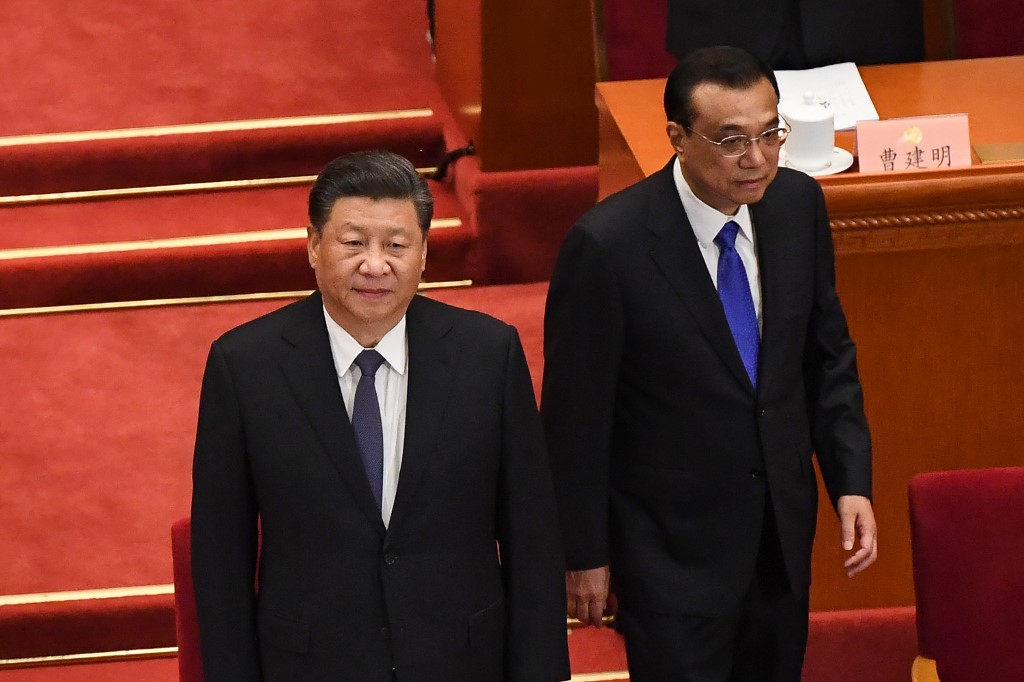(ATF) China’s leadership has announced the country’s plans for national development over the next five years – and the general direction to 2035.
This year is the final one of the 13th Five-Year Plan, so the party heavyweights are laying out the 14th Five-Year Plan.
President and General Secretary Xi Jinping attaches great importance to this task – outlining development goals, ideas, and measures for the half-decade ahead. So, officials have been doing in-depth local inspections, focusing on old problems and new challenges; are all under intense discussion as various factions push their interests.
The Fifth Plenary Session of the 19th Central Committee of the Communist Party of China was held in Beijing on the morning of Monday October 26. Xi Jinping, General Secretary of the Central Committee, gave a work report to the plenary meeting on behalf of the Political Bureau, and addressed the formal Proposals on Formulating the Fourteenth Five-Year Plan for National Economic and Social Development and Long-Term Goals for 2035.
China has formulated and implemented thirteen five-year plans since 1953.
These plans have led the development of China, especially after the “capitalist road” faction of Deng Xiaoping took over after the death of Chairman Mao. It took decades to complete the industrialization process and become the second largest economy in the world. But the country’s rapid growth has been unprecedented.
From 2015 to 2020, the period of the 13th Five-Year Plan was a decisive stage for achieving their CCP’s goal of creating a “well-off society”.
Bid to avoid stagnation
China’s top leaders are seeking to balance growth and reforms to avoid stagnation amid an uncertain global outlook and deepening tensions with the United States.
President Xi and the Central Committee will spend four days behind closed doors laying out the 14th blueprint for economic and social development.
The plan and its execution will be crucial for China to avoid the so-called “middle income” trap, policy insiders say, referring to the struggle that many economies endure when trying to boost productivity and shift towards higher value-added industries.
“Although the Chinese government has been calling for a transition in the development model for a number of years, we think the next five years will be particularly important, both politically and economically,” Goldman Sachs economists wrote in a note ahead of the Plenum. It was the fifth meeting of the Central Committee since the 2017 party congress.
Sustaining steady growth will be the priority, even as expectations grow that top leaders could announce fresh reforms to spur domestic demand, innovation and self-reliance under Xi’s new “dual circulation” strategy, policy insiders said.
Investors also will be closely watching to see if China moves to a more flexible economic growth target, after dropping it this year for the first time since 2002 due to the uncertainty caused by the coronavirus crisis. Some analysts said dropping growth targets would reduce the country’s reliance on debt-fueled stimulus and encourage more productive investment.
China, where the Covid-19 outbreak first emerged, has mounted a robust economic rebound after quashing the domestic spread of the virus, but global prospects remain gloomy and the pandemic has added to tensions with the United States.
“China’s potential growth rate will slow further due to the aging population, weakening effects from investment in driving growth and diminishing dividends from globalisation,” said Tang Jianwei, senior economist at Bank of Communications.
“To reverse the slowdown, we need deep-rooted reforms.”
Lower growth target
Policy sources have told Reuters that China’s leaders are set to endorse a lower growth target compared with 2016-2020.
Government think tanks and economists have made recommendations for average annual gross domestic product (GDP) growth targets including “around 5%”, 5-5.5% to 5-6%, the sources said.
The plan to be discussed and approved by leaders next week is expected to be unveiled at the annual parliament meeting in early 2021.
“We need to maintain a balance between development, stability, and risk prevention,” said a policy insider. “Macro adjustments will be more difficult and this will present a test for policymakers.”
Inward shift; hukou reforms?
Xi’s strategy to guide the next phase of development, which points to an inward economic shift, has fanned calls by government advisers for reforms to unleash domestic growth drivers, including loosening curbs on residency and land rights and boosting household incomes.
Speeding up reform of the household registration “hukou” system would enable migrant workers to enjoy more social welfare benefits, while land reform would enable farmers get a bigger share of the gains from land deals. Both measures would spur urbanisation and consumption.
Expected moves to further free up interest rates and expand the role of capital markets would address distortions in credit allocation that see huge state banks lend to state companies while the private sector is often deprived of credit.
Chinese leaders are also expected to discuss further plans to curb greenhouse gas emissions and ease reliance on imported technology, especially semiconductors, as Washington squeezes Chinese tech giants including Huawei and Semiconductor Manufacturing International Corp.
With reporting by Reuters






















